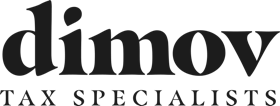A Comprehensive Guide to Form 550
The tax document Form 5500 is required by the Internal Revenue Service (IRS), the Department of Labor (DOL) and the Pension Benefit Guaranty Corporation (PBGC). Form 5500 is utilized as a reporting tool by plan administrators. It is designed to provide essential information about the financial condition and operations of these plans and investments. Through this article, an understanding of Form 5500 will be fostered, elucidating who is obligated to file, the process involved, and how Dimov Tax & CPA Services can assist in simplifying this annual obligation.
Form 5500
This form is regulated under the Employee Retirement Income Security Act of 1974 (ERISA). The primary purpose of this form is to provide information about the operations, funding and investments of employee benefit plans to the federal government. The data collected from Form 5500 is used by federal agencies to ensure that plans are managed in accordance with legal and regulatory standards.
Obligation
The obligation to file Form 5500 primarily falls on administrators and sponsors of employee benefit plans. Further insight into who is required to file is as follows:
- Employers and Plan Administrators of Pension Benefit Plans: This includes both defined benefit plans and defined contribution plans such as 401(k)s which are provided to employees as part of their employment benefits package.
- Employers and Plan Administrators of Welfare Benefit Plans: These plans need to be filed if they cover 100 participants or more. Welfare benefit plans encompass benefits such as health, dental, life insurance and disability insurance benefits.
- Plans Covered by ERISA: Any plan that falls under the Employee Retirement Income Security Act of 1974 (ERISA) is required to file Form 5500. ERISA covers most employer-sponsored health and pension plans.
This filing requirement is an essential part of maintaining the transparency and compliance of employee benefit plans with federal regulations, helping to ensure that these plans are managed and operated according to legal standards.
The Form 5500 Series includes different versions depending on the size of the business and structure.
- Form 5500: This form is for companies with 100 or more plan participants. It provides detailed information about your plan qualifications, investments and financial condition.
- Form 5500-SF: Designed for companies with fewer than 100 plan participants at the beginning of the year, this simplified short form is suitable for filing plans like mutual funds and variable annuities with determinable fair value.
- Form 5500-EZ: Specifically for plans with only one participant, such as those where a business owner invests in a stand-alone retirement plan.
Steps in the Filing Process
The filing process for Form 5500 involves several key steps that must be followed carefully to ensure compliance with regulatory requirements. An outline of the steps involved is provided below:
- Gathering Information: The first step in preparing Form 5500 is to gather all necessary information regarding the plan’s operations, finances and compliance status over the reporting year. This includes details about plan assets, liabilities, income, expenses, contributions (both employer and employee) and benefit payments.
- Completing the Form: Using the information collected, Form 5500 should be filled out accurately. This form includes various sections that require detailed financial information and disclosures about the plan’s administration and compliance with relevant laws.
- Reviewing the Form: Once the form is completed, it should be thoroughly reviewed to ensure that all information is accurate and complete. This step is crucial as errors or omissions can lead to penalties or require filing an amended return.
- Electronic Filing: Form 5500 must be filed electronically using the EFAST2 system, a web-based filing system designed by the Department of Labor.
- Confirmation and Receipt: After filing, a confirmation receipt will be received that the form has been filed. It is considered important to keep this confirmation as proof of filing.
- Amendments if Necessary: If errors are discovered after submission, it may be needed to amend the filing. This involves submitting a corrected form and explaining the changes.
- Record Keeping: After filing Form 5500, the copies of the filed form and all relevant documents should be kept for at least six years. These records should be accessible for examination by plan participants and regulatory bodies.
Common Form 5500 Errors to Avoid
When filing Form 5500, accuracy is crucial as errors can lead to penalties, audits or other compliance issues. Some common mistakes to avoid when completing Form 5500 may be listed as below:
- Incorrect or Incomplete Plan Information: Failing to provide an accurate plan name, sponsor’s name, EIN or plan number can lead to confusion and potential mismatches in the Department of Labor (DOL) records.
- Filing the Wrong Version of the Form: It should be ensured that the most current version of Form 5500 is used. The IRS, DOL and PBGC update these forms and their schedules periodically.
- Errors in Participant Counting: Miscounting the number of participants at the beginning and end of the plan year is a common error. This includes both active participants and those no longer employed but still vested.
- Failing to Attach Required Schedules: Depending on the type of plan and the number of participants, different schedules may be required. Forgetting to attach necessary schedules, such as Schedule H (Financial Information) or Schedule I (Financial Information—Small Plan) is a frequent oversight.
- Mismatched Financial Data: Inconsistencies in financial data such as contributions reported and totals on the financial schedules, can trigger red flags for auditors. It should be ensured all financial information is consistent and reconciles with the plan’s financial statements.
- Inaccurate Service Provider Information: Form 5500 requires disclosure of information about service providers who receive $5,000 or more from the plan. Providing incomplete or inaccurate information about these service providers can lead to compliance issues.
- Late Filing: Failing to file on time is a common and costly error. Form 5500 must be filed by the last day of the seventh month after the plan year ends unless an extension is requested and granted.
- Not Filing Electronically: The IRS requires that Form 5500 be filed electronically through the EFAST2 system. Paper filings are not accepted and will be considered non-filed.
- Failure to Keep Copies: After filing, it is crucial to keep copies of the filed Form 5500 and all supporting documents for at least six years, as required by law. This documentation must be available for inspection.
- Omitting Audited Financial Statements: Larger plans (generally those with 100 or more participants) are required to attach audited financial statements prepared by an independent qualified public accountant.
By carefully avoiding these errors and meticulously reviewing the form before submission, it can be ensured that the filing process goes smoothly and that the plan remains in compliance with federal regulations.
Dimov Tax & CPA Services provides comprehensive assistance with Form 5500 to ensure that your tax obligations are met without errors or delays. The services offered include:
- Preparation and Review: The form is prepared and reviewed by experienced professionals to ensure accuracy and compliance with regulations.
- Filing Assistance: Guidance is provided throughout the filing process, ensuring timely and correct submissions.
- Consultation on Compliance: Advice is offered to ensure that your plans are compliant with current laws and regulations.
- Audit Support: In the event of an audit, Dimov Tax & CPA Services would provide support to navigate the auditing process smoothly.
Conclusion
Compliance with ERISA and the filing of Form 5500 can be daunting for many plan administrators. However, with the expert services provided by Dimov Tax & CPA Services, this annual obligation can be handled efficiently and accurately. By entrusting your filing needs to our professionals, peace of mind is ensured knowing that your compliance requirements are being managed meticulously. Whether you are establishing a new plan or managing an existing one, our tailored services are designed to meet your specific needs. Remember, the timely and accurate filing of Form 5500 is not just a regulatory requirement; it is also a reflection of the diligent management of employee benefit plans.


